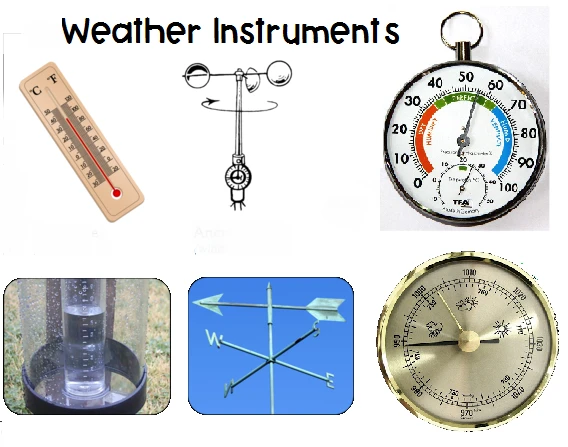
# The Instruments of the Weather
## Understanding Weather Instruments
Weather plays a crucial role in our daily lives, influencing everything from our clothing choices to agricultural productivity. To accurately predict and monitor weather conditions, scientists and meteorologists rely on a variety of specialized instruments. These tools help measure different atmospheric parameters, providing valuable data for weather forecasting and climate studies.
### The Most Essential Weather Instruments
1. **Thermometer**: Measures air temperature
2. **Barometer**: Measures atmospheric pressure
3. **Hygrometer**: Measures humidity levels
4. **Anemometer**: Measures wind speed
5. **Wind Vane**: Determines wind direction
6. **Rain Gauge**: Measures precipitation amounts
7. **Pyranometer**: Measures solar radiation
## How These Instruments Work Together
Modern weather stations typically combine several of these instruments into integrated systems. The data collected from these tools is analyzed by meteorologists to create weather forecasts and track climate patterns. For instance, a sudden drop in barometric pressure often indicates an approaching storm, while changes in wind direction can signal shifting weather fronts.
Advanced weather stations may also include more sophisticated equipment like ceilometers (for measuring cloud height) or lightning detectors. Some even incorporate satellite and radar data for more comprehensive weather monitoring.
## The Evolution of Weather Instruments
From Simple to Sophisticated
Weather instruments have come a long way since their early inventions. The first thermometers appeared in the 17th century, using alcohol or mercury in glass tubes. Today’s digital thermometers provide instant, precise readings. Similarly, modern anemometers can measure wind speed with incredible accuracy using ultrasonic technology rather than mechanical cups.
The Future of Weather Measurement
Emerging technologies like IoT (Internet of Things) are revolutionizing weather monitoring. Small, connected sensors can now provide real-time data from multiple locations, improving forecast accuracy. Drones and autonomous weather buoys are expanding our ability to monitor weather in remote or dangerous areas.
## Importance of Accurate Weather Instruments
Reliable weather instruments are essential for numerous sectors:
- Agriculture: Helps farmers plan planting and harvesting
- Aviation: Critical for flight safety and routing
- Maritime: Important for ship navigation
- Emergency services: Vital for disaster preparedness
- Energy: Helps manage power generation and distribution
As climate change makes weather patterns more unpredictable, the role of accurate weather instruments becomes even more crucial for understanding and adapting to our changing environment.
Keyword: instruments of the weather